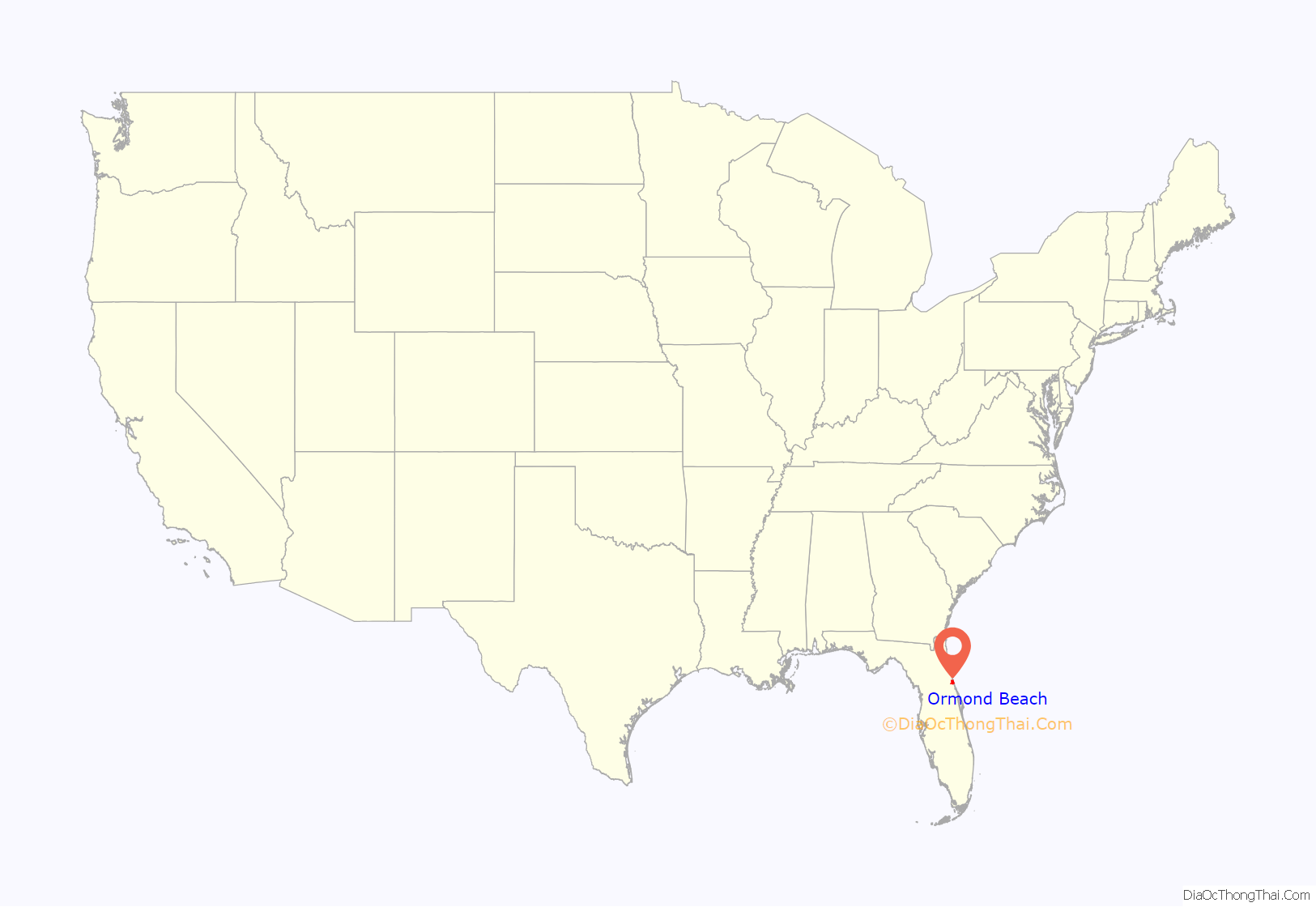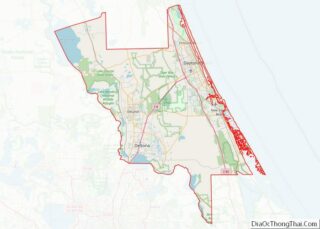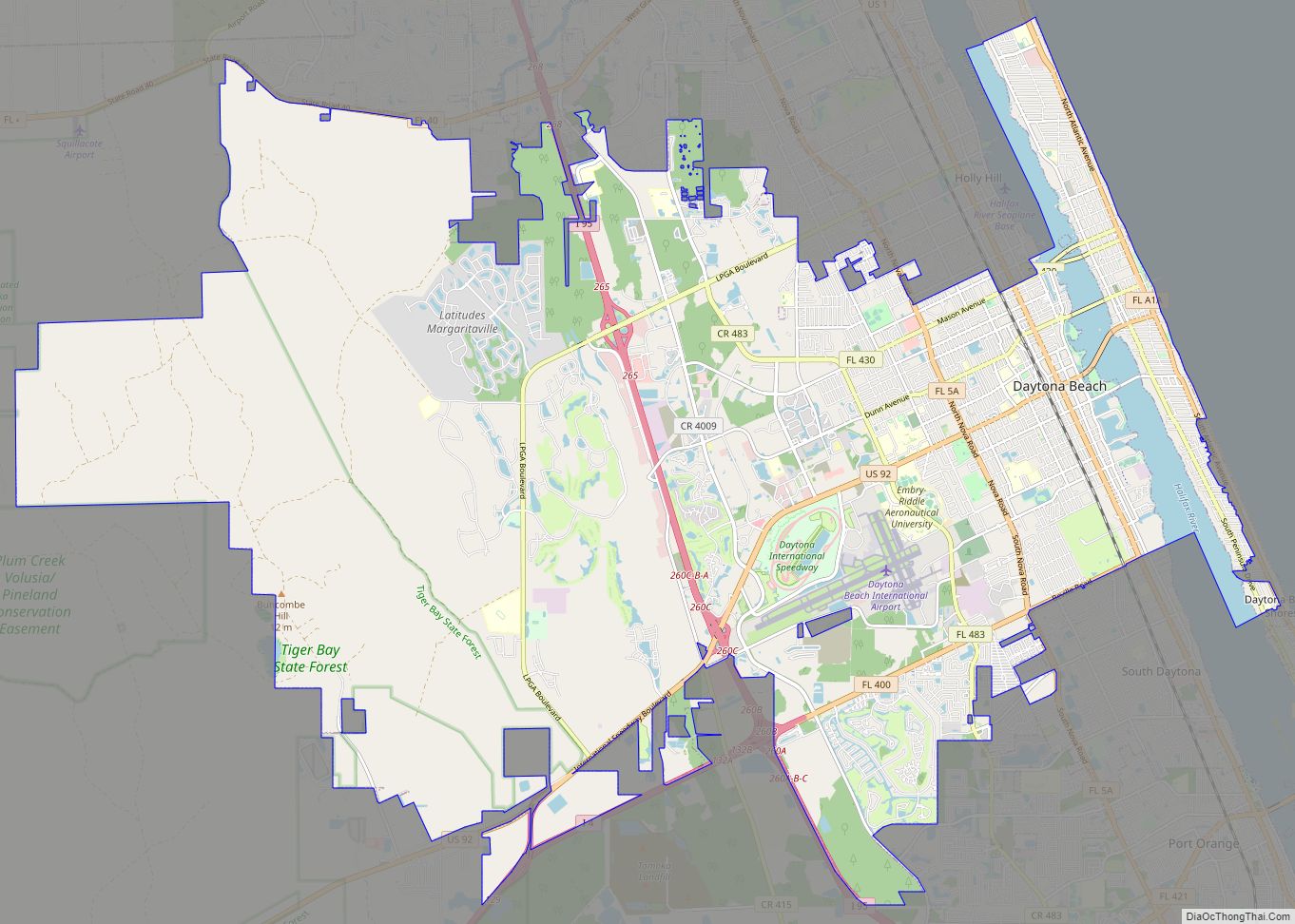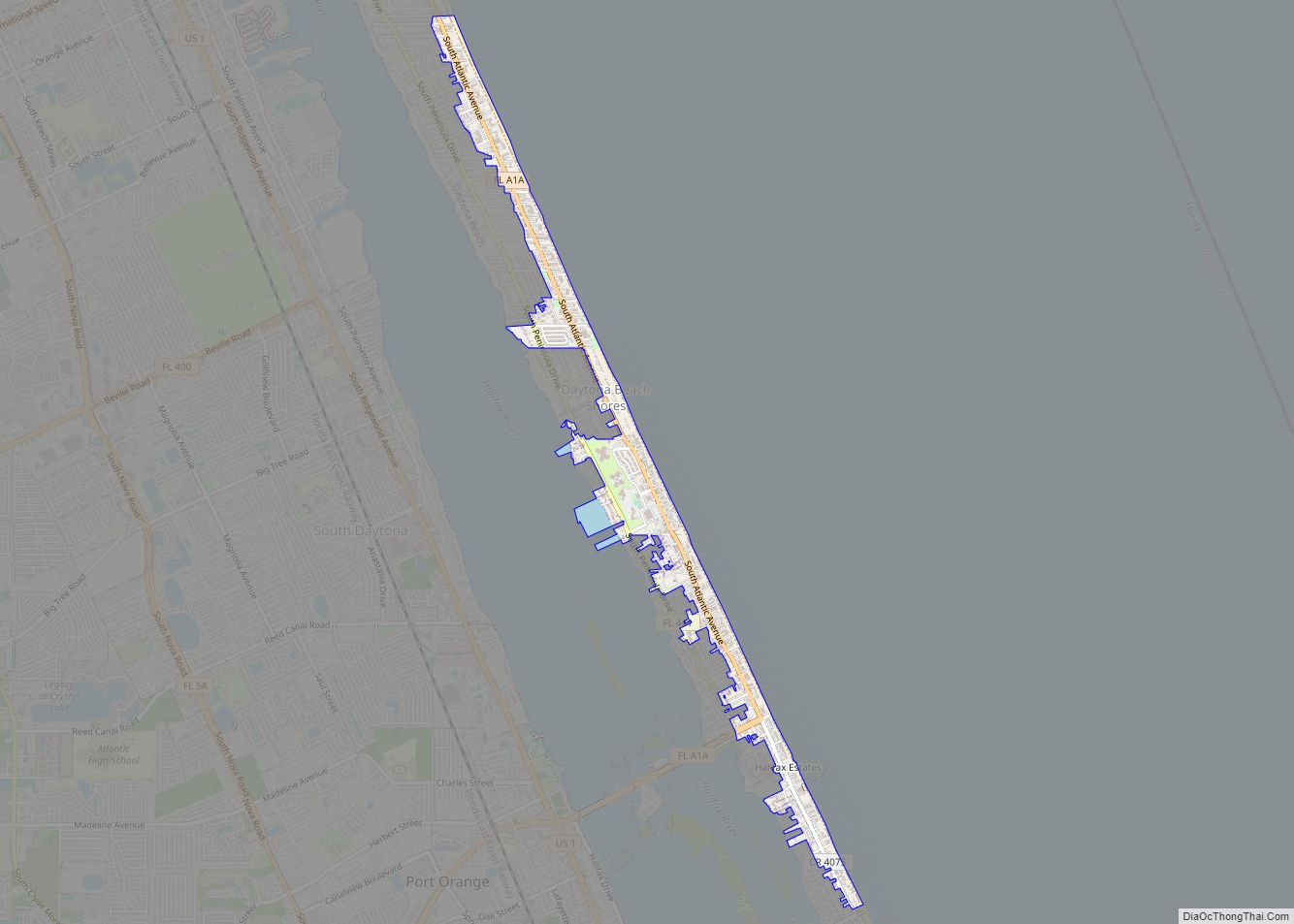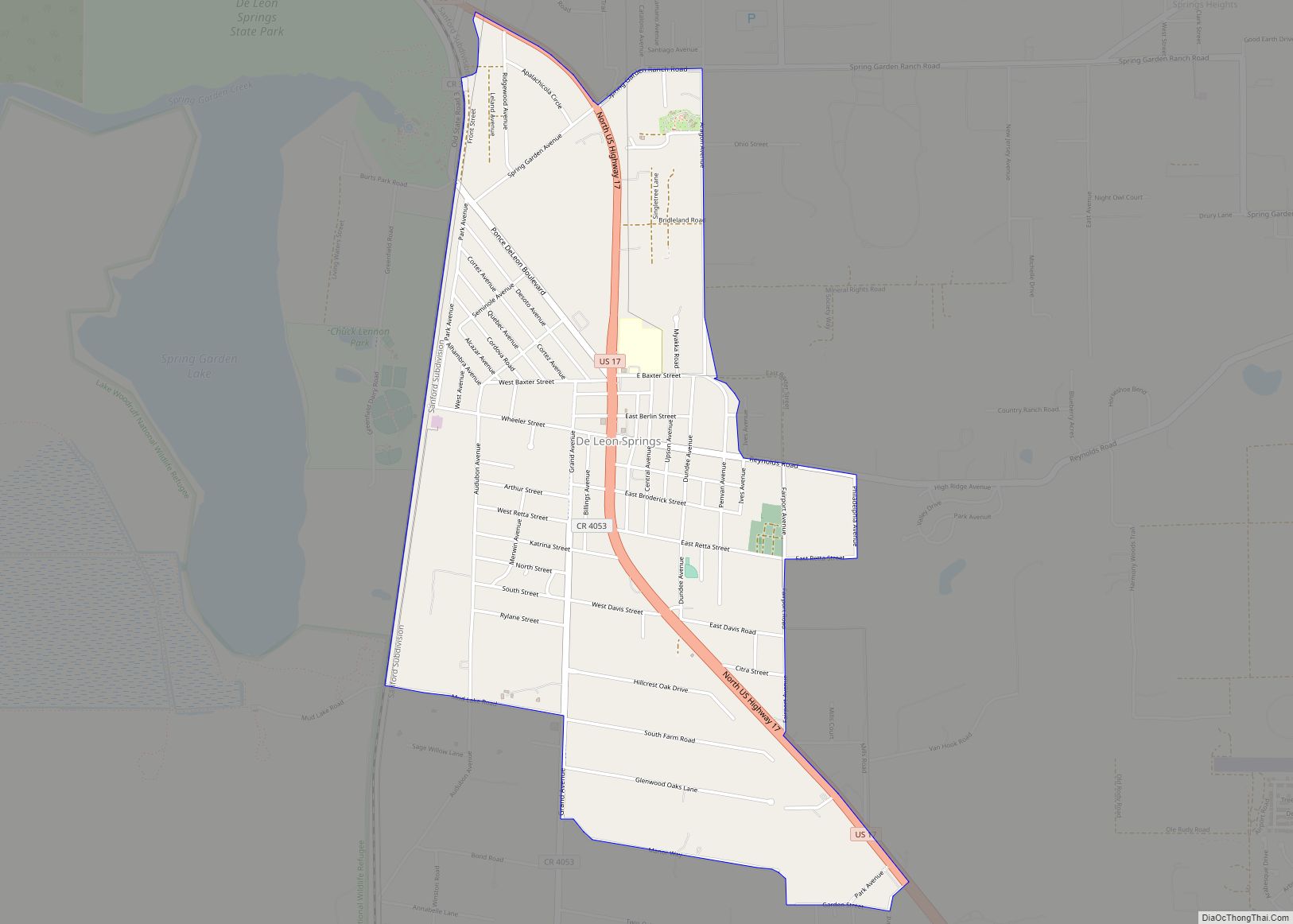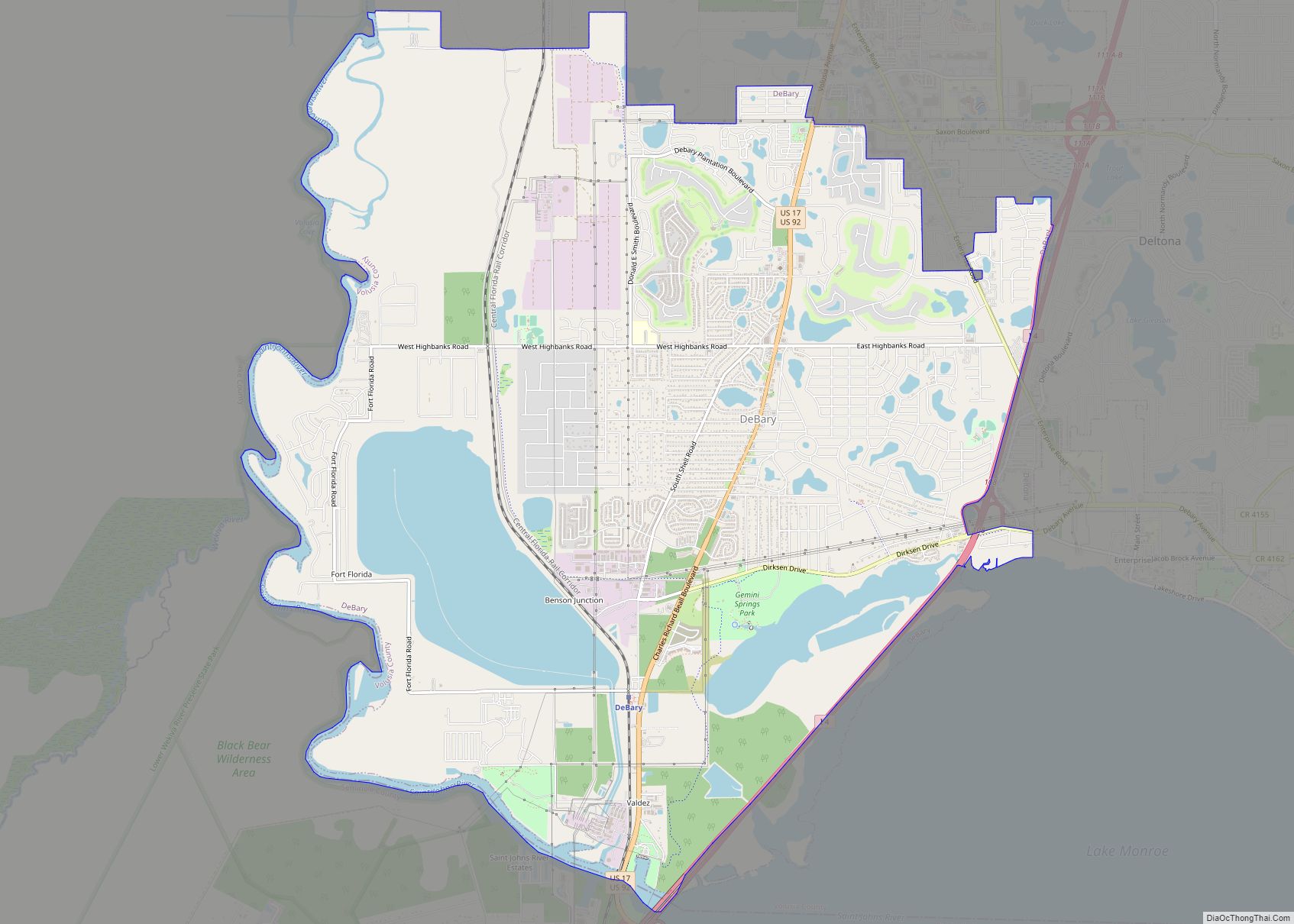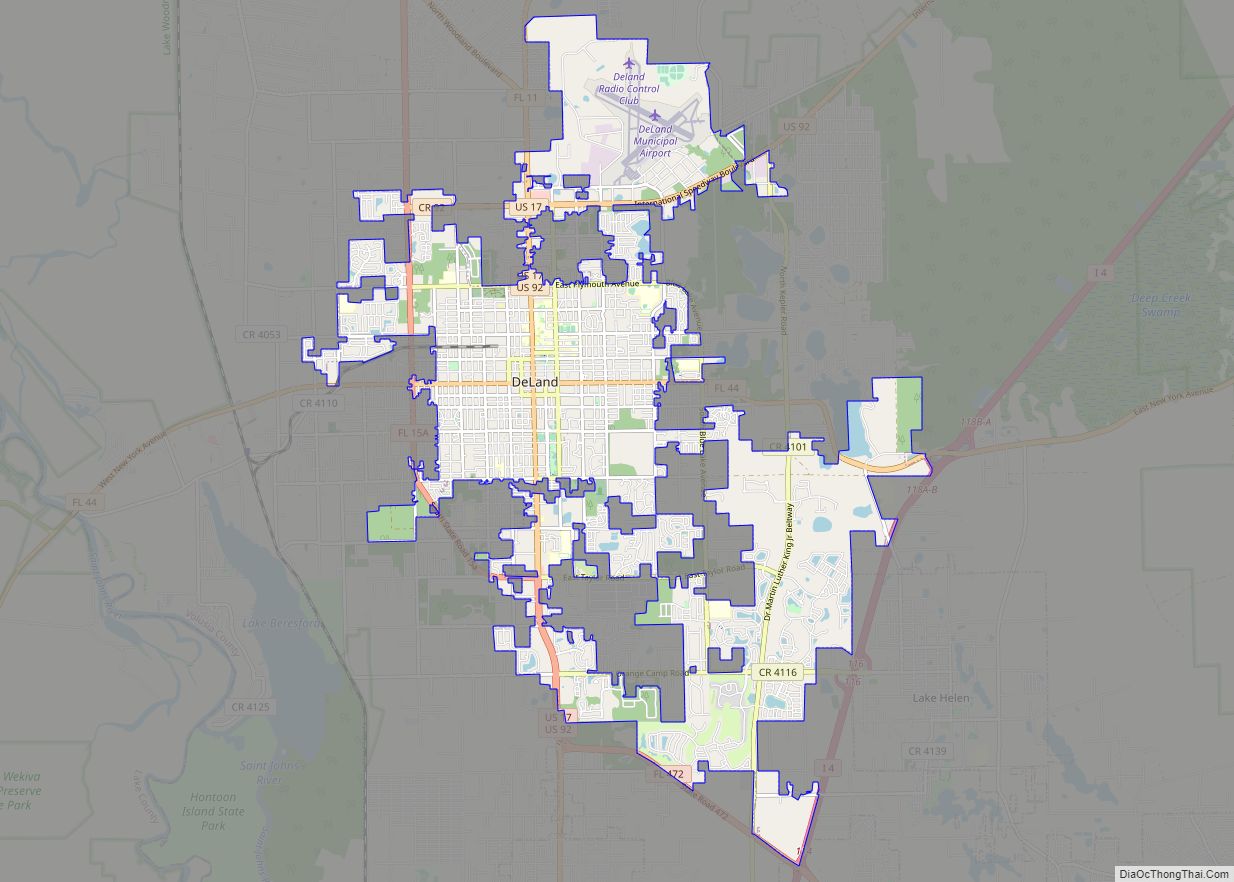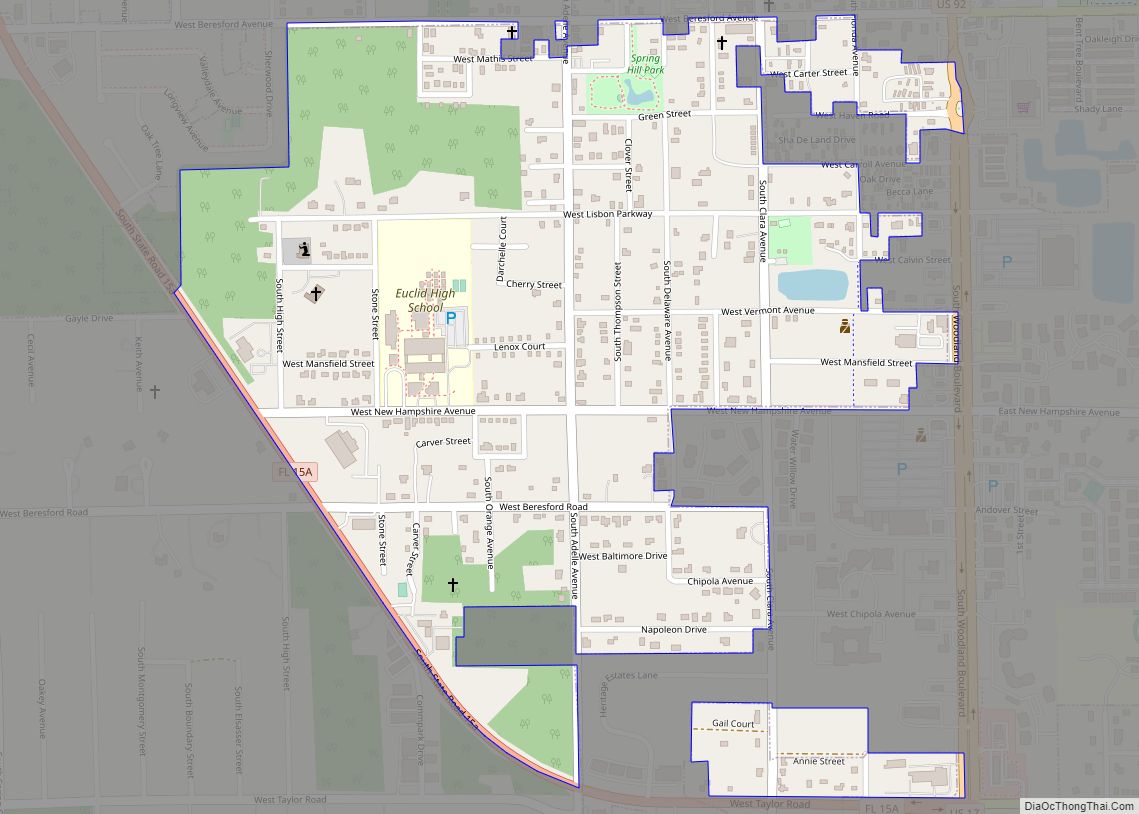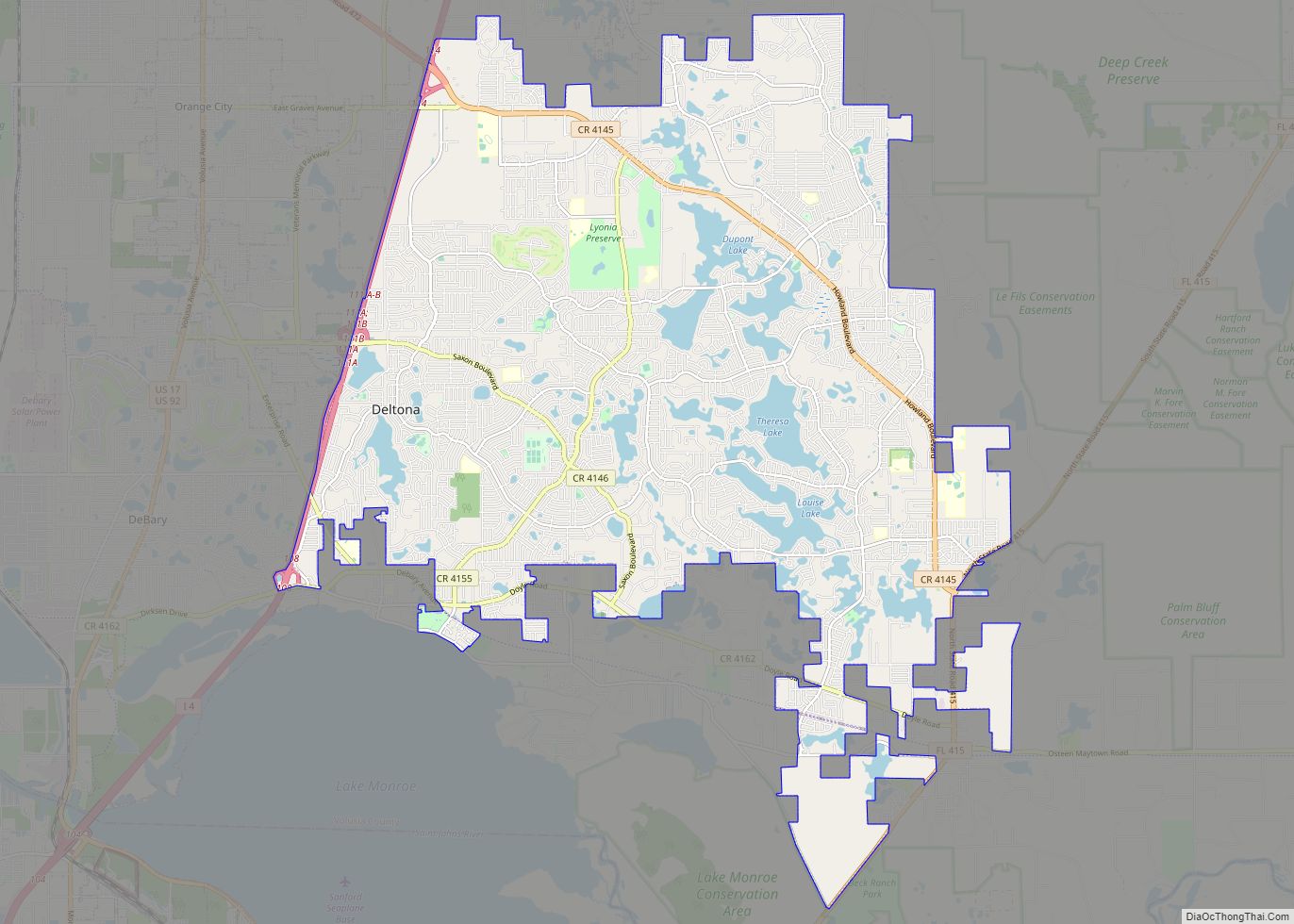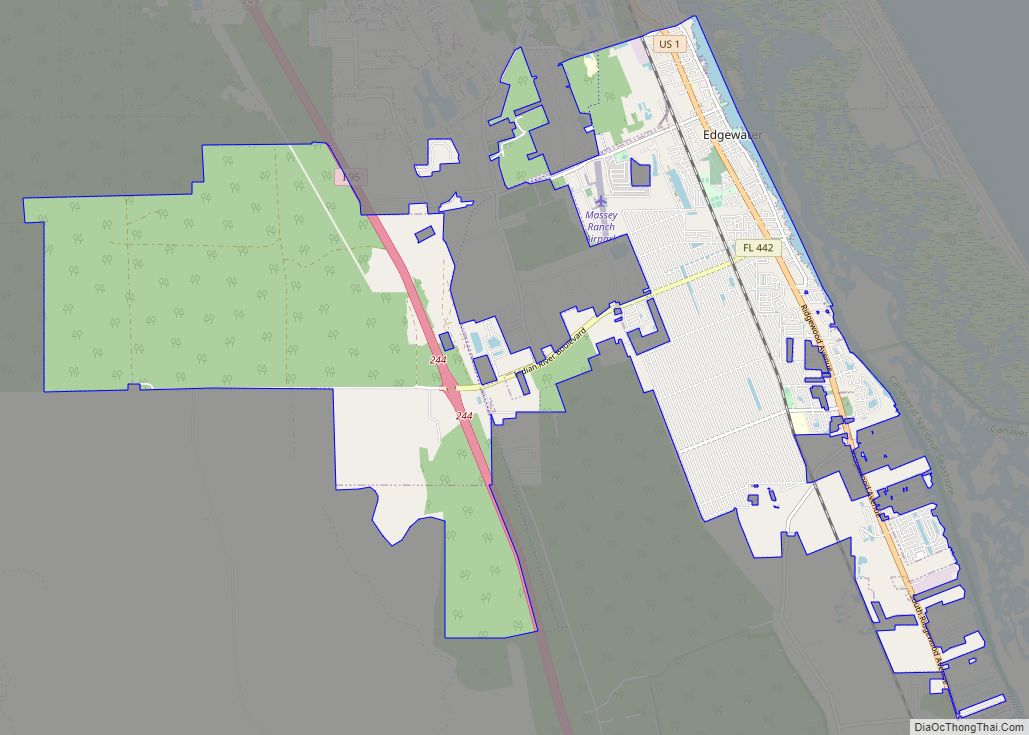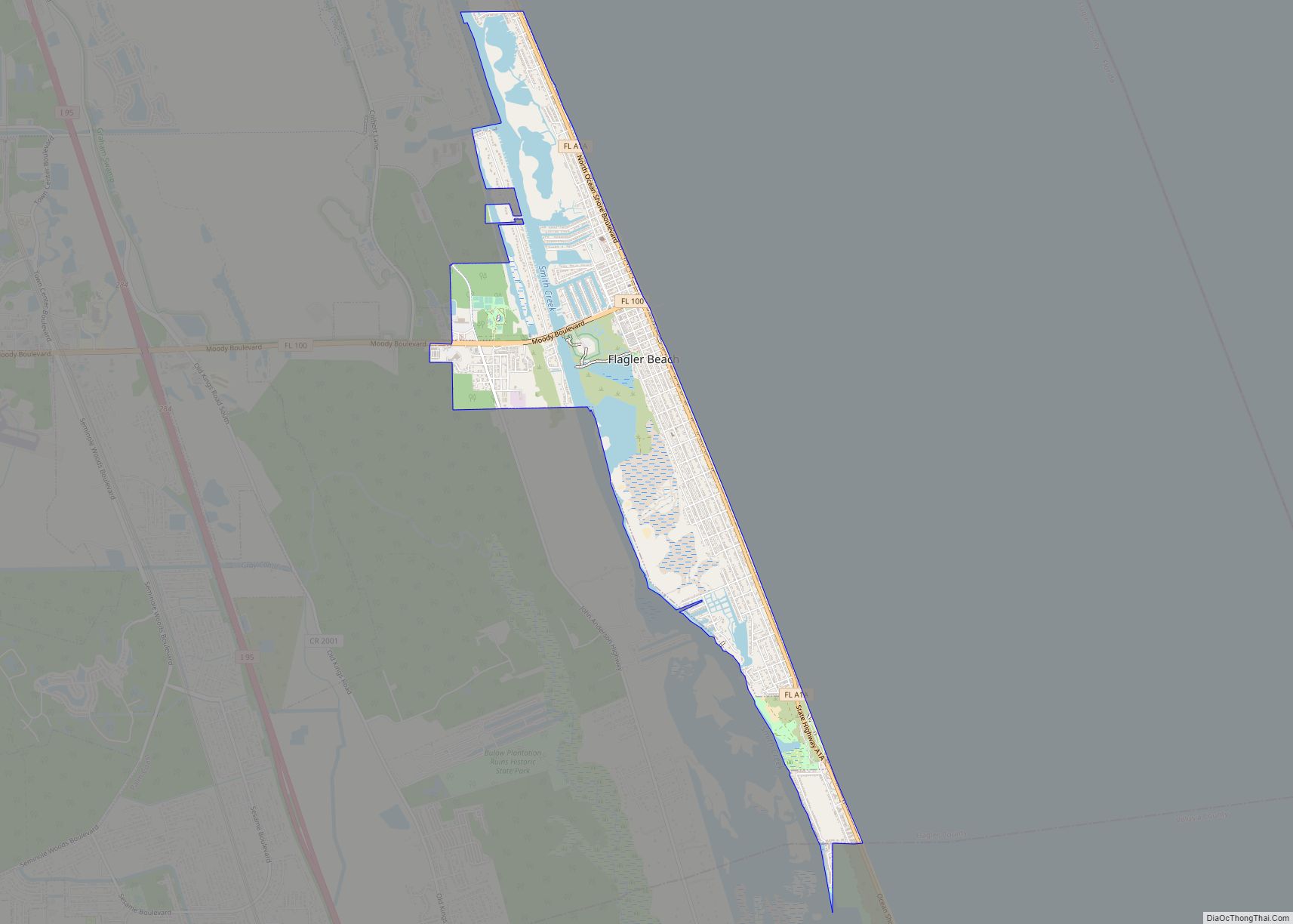Ormond Beach is a city in Volusia County, Florida, United States. The population was 43,080 at the 2020 census. Ormond Beach lies directly north of Daytona Beach and is a principal city of the Deltona–Daytona Beach–Ormond Beach, FL Metropolitan Statistical Area. The city is known as the birthplace of speed, as early adopters of motorized cars flocked to its hard-packed beaches for yearlong entertainment, since paved roads were not yet commonplace. Ormond Beach lies in Central Eastern Florida.
| Name: | Ormond Beach city |
|---|---|
| LSAD Code: | 25 |
| LSAD Description: | city (suffix) |
| State: | Florida |
| County: | Volusia County |
| Elevation: | 7 ft (2 m) |
| Land Area: | 34.78 sq mi (90.09 km²) |
| Water Area: | 4.13 sq mi (10.69 km²) |
| Population Density: | 1,238.50/sq mi (478.18/km²) |
| Area code: | 386 |
| FIPS code: | 1253150 |
| GNISfeature ID: | 0307388 |
Online Interactive Map
Click on ![]() to view map in "full screen" mode.
to view map in "full screen" mode.
Ormond Beach location map. Where is Ormond Beach city?
History
Ormond Beach was once within the domain of the Timucuan Indians. Ormond Beach was frequented by Timacuan Indians, but never truly inhabited until 1643 when Quakers blown off course to the New England area ran ashore. They settled in a small encampment along the Atlantic shore. Early relations with neighboring tribes were fruitful, however, in 1704 a local Timacuan chief, Oseanoha, led a raid of the encampment killing most of the population. In 1708 Spaniards inhabited the area and laid claim until British control began. The city is named for James Ormond I, an Anglo-Irish-Scottish sea captain commissioned by King Ferdinand VII of Spain to bring Franciscan settlers to this part of Florida. Ormond had served Britain and Spain in the Napoleonic Wars as a ship captain, and was rewarded for his services to Spain by King Ferdinand VII. Ormond later worked for the Scottish Indian trade company of Panton, Leslie & Company, and his armed brig was called the Somerset. After returning to Spanish control, in 1821, Florida was acquired from Spain by the United States, but hostilities during the Second Seminole War delayed settlement until after 1842. In 1875, the city was founded as New Britain by inhabitants from New Britain, Connecticut, but would be incorporated in 1880 as Ormond for its early plantation owner.
With its hard, white beach, Ormond became popular for the wealthy seeking relief from northern winters during the Floridian boom in tourism following the Civil War. The St. Johns and Halifax Railway arrived in 1886, and the first bridge across the Halifax River was built in 1887. John Anderson and James Downing Price opened the Ormond Hotel on January 1, 1888. Henry Flagler bought the hotel in 1890 and expanded it to accommodate 600 guests. It would be one in a series of Gilded Age hotels catering to passengers aboard his Florida East Coast Railway, which had purchased the St. Johns & Halifax Railroad. Once a well-known landmark which was listed on the National Register of Historic Places in 1980, the hotel was razed in 1992.
On December 5, 1896, the Nathan F. Cobb, a wooden schooner built in 1890, ran aground on a sandbar off Ormond.
One of Flagler’s guests at the Ormond Hotel was his former business partner at the Standard Oil Company, John D. Rockefeller. He arrived in 1914 and after four seasons at the hotel bought an estate called The Casements, that would be Rockefeller’s winter home during the latter part of his life. Sold by his heirs in 1939, it was purchased by the city in 1973 and now serves as a cultural center. It is the community’s best-known historical structure.
Beginning in 1902, some of the first automobile races were held on the compacted sand from Ormond south to Daytona Beach. Pioneers in the industry, including Ransom Olds with his Pirate Racer, and Alexander Winton, tested their inventions. The American Automobile Association brought timing equipment in 1903 and the area acquired the nickname “The Birthplace of Speed.” In 1907 Glenn Curtiss set an unofficial world record of 136.36 miles per hour (219.45 km/h), on a 40-horsepower (30 kW) 269 cu in (4,410 cc) Curtiss V-8 motorcycle. Lee Bible, in the record-breaking, but fatal, White Triplex, was less fortunate. Driving on the beach is still permitted on some stretches.
The city was renamed Ormond Beach following a referendum held on April 25, 1950.
Royal Arch Oak in c. 1905
Ormond Hotel in c. 1905
Orange Grove in c. 1905
Bostrom Oaks in c. 1908
Ormond Beach has four downtown riverfront parks and a beachfront park along with 37 other parks and gardens large and small. The historic shopping district located along Granada Boulevard from A1A to Orchard Street is home to dozens of locally-owned shops and restaurants along with historic and cultural sites.
Ormond Beach Road Map
Ormond Beach city Satellite Map
Geography
Ormond Beach is located at 29°17′11″N 81°04′30″W / 29.286405°N 81.074882°W / 29.286405; -81.074882 (29.286405, –81.074882).
According to the United States Census Bureau, the city has a total area of 39.0 square miles (101.0 km), of which 31.9 square miles (82.7 km) is land, and 7.1 square miles (18.3 km) (18.12%) is water. Drained by the Tomoka River, Ormond Beach is located on the Halifax River lagoon and the Atlantic Ocean.
See also
Map of Florida State and its subdivision:- Alachua
- Baker
- Bay
- Bradford
- Brevard
- Broward
- Calhoun
- Charlotte
- Citrus
- Clay
- Collier
- Columbia
- Desoto
- Dixie
- Duval
- Escambia
- Flagler
- Franklin
- Gadsden
- Gilchrist
- Glades
- Gulf
- Hamilton
- Hardee
- Hendry
- Hernando
- Highlands
- Hillsborough
- Holmes
- Indian River
- Jackson
- Jefferson
- Lafayette
- Lake
- Lee
- Leon
- Levy
- Liberty
- Madison
- Manatee
- Marion
- Martin
- Miami-Dade
- Monroe
- Nassau
- Okaloosa
- Okeechobee
- Orange
- Osceola
- Palm Beach
- Pasco
- Pinellas
- Polk
- Putnam
- Saint Johns
- Saint Lucie
- Santa Rosa
- Sarasota
- Seminole
- Sumter
- Suwannee
- Taylor
- Union
- Volusia
- Wakulla
- Walton
- Washington
- Alabama
- Alaska
- Arizona
- Arkansas
- California
- Colorado
- Connecticut
- Delaware
- District of Columbia
- Florida
- Georgia
- Hawaii
- Idaho
- Illinois
- Indiana
- Iowa
- Kansas
- Kentucky
- Louisiana
- Maine
- Maryland
- Massachusetts
- Michigan
- Minnesota
- Mississippi
- Missouri
- Montana
- Nebraska
- Nevada
- New Hampshire
- New Jersey
- New Mexico
- New York
- North Carolina
- North Dakota
- Ohio
- Oklahoma
- Oregon
- Pennsylvania
- Rhode Island
- South Carolina
- South Dakota
- Tennessee
- Texas
- Utah
- Vermont
- Virginia
- Washington
- West Virginia
- Wisconsin
- Wyoming
